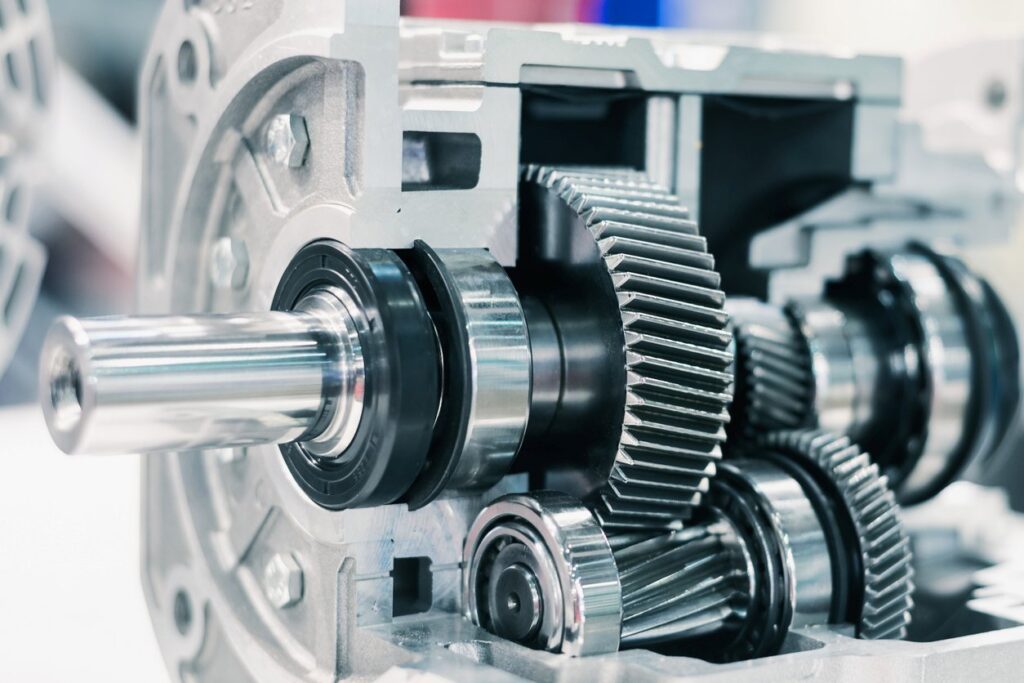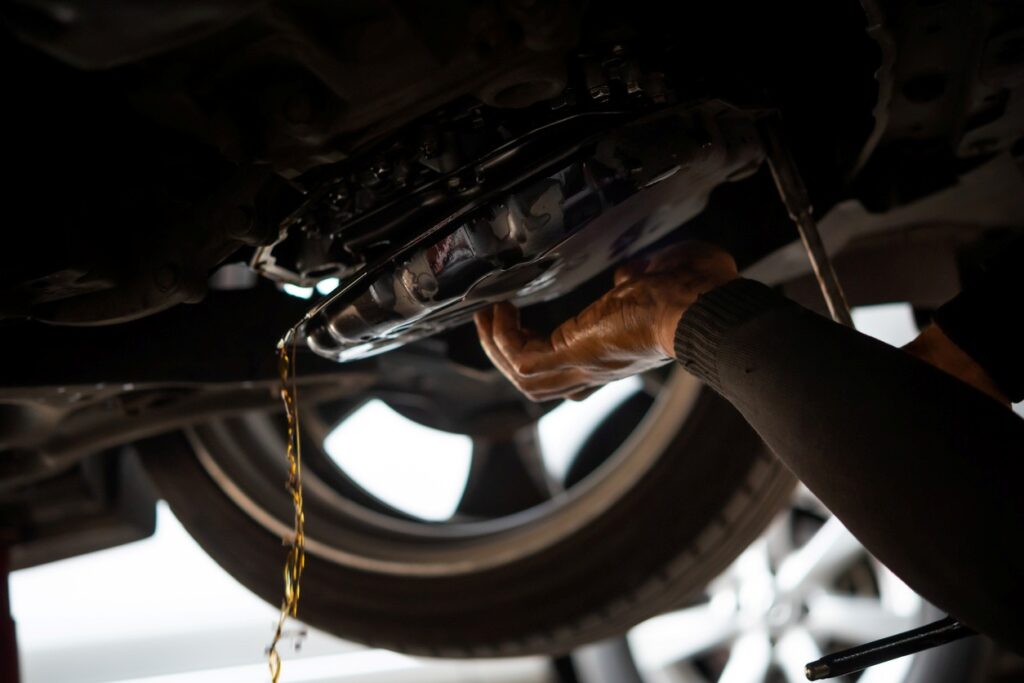Between manuals, automatics, CVTs, and more, it’s not always clear which transmission type is ideal for you and your driving habits, let alone where to bring it when something is off. A little transmission know-how goes a long way toward making the right call.
The transmission experts at Kennedy Transmission will discuss each type of transmission you are likely to encounter. We’ll also explain how mechanics play a significant role in selecting the right auto shop for your transmission.
Manual vs. Automatic Transmissions: What’s the Difference?
| Manual | Automatic | DCT | AMT | CVT | |
| Fuel Economy | Average to Good | Average | Excellent | Good | Excellent |
| Ease of Use | Poor | Excellent | Excellent | Good | Excellent |
| Long-Term Reliability | Excellent | Good | Average | Good | Average |
| Cost of Repair | Low | High | Very High | High | Very High |
| Smoothness of Ride | Poor to Good | Excellent | Excellent | Poor | Excellent |
First, we’ll take a closer look at some of the most common types of transmissions today, including the pros, cons, and quirks of each, and what you should know about getting them repaired.
Affordable and Reliable Fully Manual Transmission Vehicles

The oldest and arguably most successful transmission design of all time is the simple manual system. The operations of a manual transmission are straightforward—a gearbox, a clutch, the engine itself, and manual transmission fluid to keep your shifts smooth. Friction between the clutch disc and your engine’s flywheel sends power to your transmission’s gearbox. Pressing the clutch pedal disconnects the engine from the transmission, allowing you to select a new gear.
This simplicity makes manual transmissions easier to work on than most other types, meaning that a general repair shop can handle more maintenance without needing to call in a specialist. In most cases, the clutch is the first component to wear out. A skilled general mechanic can handle a clutch swap, though it may take more hours than a transmission specialist might need.
Manual transmissions were the go-to option for base trim levels in most vehicles because they were cheaper to produce and supported by a larger pool of manual drivers than we see today. While once a mainstream choice, manuals have become less common, with some models offering them as premium upgrades.
Affordable Manual Transmission Cars
For those who want no-frills affordability, the Nissan Versa ranks among the best manual transmission cars at a low price. It may be small, but with the proven reliability of a manual gearbox, you can cut costs on your new car while knowing you’ve got a transmission that can handle years of driving. And if repairs are ever needed, you’re looking at far lower costs than the CVT versions.
Automatic Transmissions
There have been dozens of automatic transmission designs over the years, but they all follow the same basic principles. Most automatics replace the clutch with a torque converter, which uses transmission fluid to transfer power instead of a direct mechanical link. This setup delivers power from the engine smoothly, but because there’s no solid connection, some energy is lost as heat in the fluid, also known as parasitic loss.
Traditionally, this meant a smoother ride with a dip in fuel economy, compared to manual transmissions. However, modern automatics, with 6-, 7-, 8-speed, or infinitely variable gear options, can fine-tune their torque ratios as you accelerate, closing the long-standing efficiency gap.
Still, more moving parts mean more complexity. While a general shop can often handle fluid and filter changes, along with diagnosing leaks or basic sensor issues, internal repairs or part replacements are best handled by a transmission specialist.
Other Manual and Automatic Transmission Options

Over the past 30 years, manufacturers have expanded the list of transmission options in passenger vehicles. While many of these designs may seem cutting-edge, their roots reach decades into the past.
Continuously Variable Transmissions (CVT)
Despite their reputation as a newer technology, CVTs have been around for over 100 years in tractors and other machinery, using a simple belt-and-cone system to transfer power. It’s only in recent years that they’ve become common in everyday cars, and they’re rapidly becoming the go-to automatic option.
While the mechanics are straightforward, the standout feature is the CVT fluid, which behaves like a solid under pressure and grips the cones for power transfer. With no fixed gears, this system can maintain its most efficient ratio at all times—however, repairs can be costly.
These are among the most complex transmissions on the road, so basic maintenance, such as fluid changes, is best left to a transmission specialist. Using the wrong fluid, the wrong amount, or ignoring a leak can cause overheating and catastrophic damage, even if your vehicle has a dedicated transmission cooler.
Automated Manual Transmissions (AMT)
The first automatic manual transmissions can be traced back to the early 1940s, with the 1942 Hudson Commodore’s Drive-Master transmission being one of the best-known ancestors. With the help of modern computing, AMTs began to gain traction in the 1990s, particularly in performance-focused cars seeking quick, precise shifts without the energy loss associated with traditional automatic transmissions.
The trade-off is a ride that can feel clunkier than other transmissions. And because they rely on high-end parts for performance, repairs are often expensive and best handled by someone with experience in AMT service.
Dual-Clutch Transmissions (DCT)
If an AMT is a manual with computer-controlled shifts, a DCT takes it further with two clutches working in tandem. One clutch handles odd-numbered gears, 1, 3, and 5, while the other manages even-numbered gears, 2, 4, and 6. As you drive in one gear, the next gear is already spinning and ready to go. When it’s time to shift, the system disengages one clutch and engages the other almost instantly, often in an instant.
The result is a smooth, fast transition that’s ideal for high-performance vehicles. The downside is complexity. Like CVTs, DCTs are best serviced by transmission specialists with hands-on experience with their tight tolerances.
Get Car Transmission Repair With Kennedy Transmission
Stick shift, automatic, CVT, DCT—whatever is under the hood, our auto technicians can help you get the most miles out of your vehicle. Stop by your nearest Kennedy Transmission auto shop to discuss the current status of your car and receive recommendations for necessary repairs or transmission replacements in Minneapolis, MN. Extend the life of your transmission with help from the experts at Kennedy!
Contact us online to schedule a service today. If you need a quick auto service, we also offer transmission fluid replacement in Minneapolis, MN!
Author
Kennedy Transmission Content Team

